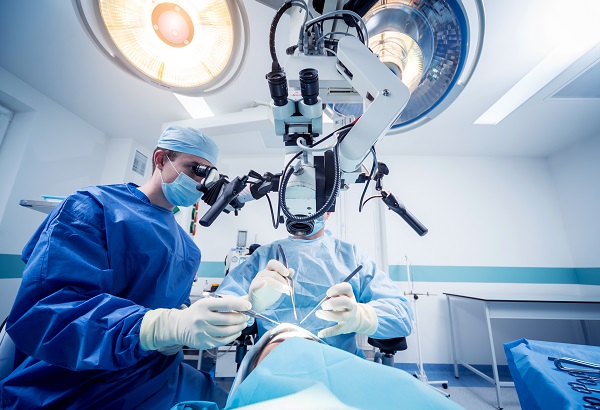How Does a Neurosurgeon Treat a Brain Aneurysm?

Wondering how neurosurgeons treat a brain aneurysm? Neurosurgeons are also called brain surgeons because they are specifically trained in performing surgical procedures on the brain. Suffering a brain aneurysm is typically a reason for undergoing brain surgery.
About brain aneurysms
According to the National Institute of Neurological Disorders and Stroke, a brain aneurysm is a weak or thin spot on an artery in the brain that balloons or bulges out and fills with blood. This situation tends to place pressure on the nerves or brain tissue and can potentially rupture. If it does rupture, the blood spills out into the surrounding tissue, which can lead to one experiencing a stroke, brain damage, coma, or death.
How neurosurgeons treat brain aneurysms
The information below outlines how neurosurgeons treat brain aneurysms in their patients. It is important to understand that not all brain aneurysms require surgery. When it comes to determining the ideal treatment option, it depends on the type, the size, and the location of the aneurysm, as well as the risk of rupture. It also depends on the patient's age, health, personal, and family medical history.
Surgical treatment
There are a few different surgical options that neurosurgeons can use in order to treat a brain aneurysm. One of the more common surgical procedures used is microvascular clipping. This particular surgical procedure requires the neurosurgeon to cut off the flow of blood to the aneurysm, which requires the patient to undergo open brain surgery. This surgical treatment option tends to be very successful, as brain aneurysms that are properly clipped often do not come back.
Endovascular treatment
Endovascular treatment is a treatment procedure that is less invasive when compared to microvascular clipping. This treatment option requires a neurosurgeon to insert a catheter into an artery and then thread the catheter through the artery until it reaches the brain aneurysm. Coils of wire are then released into the aneurysm, which reduces the amount of blood flow. Sometimes it is necessary for patients to undergo this procedure more than once, as brain aneurysms treated using this option occasionally reoccur.
Medication
While the above two treatments are commonly used to address brain aneurysms, using medication is also an option for some patients. Medications are prescribed with a goal of controlling any symptoms caused by brain aneurysms, as well as reducing any complications that brain aneurysms can cause. Two types of medication that are used to treat brain aneurysms include antiseizure drugs and calcium channel blocking drugs.
Have you been diagnosed with a brain aneurysm?
When someone receives this type of diagnosis, it is necessary for them to understand the type of brain aneurysm they have, as well as the treatment options available to them. Now that the above information has been read, it is understood what some of the more common treatment options are that neurosurgeons provide for their patients. Those who are in need of more information can take the next step by making an appointment with a neurosurgeon today.
Get more information here: https://www.brainandspineni.com or call Brain and Spine Neuroscience Institute at (813) 751-2029
Check out what others are saying about our brain aneurysm services on Yelp: Brain Aneurysm in Palm Harbor, FL.
Related Posts
A stroke treatment center acts fast when a neurological emergency strikes, delivering critical care when timing matters most. These specialized teams move quickly, utilizing advanced diagnostics, efficient procedures, and coordinated support to manage even the most complex stroke cases effectively. Through quality care, patients and their loved ones can find a clearer path to recovery…
Neurostimulation offers a targeted way to manage symptoms from certain neurological disorders by sending gentle signals to precise areas of the nervous system. With careful planning, neurostimulation can reduce tremors, limit seizures, alleviate chronic pain, and enhance daily function without requiring major incisions.Neurostimulation uses a small, implantable system or an external device to deliver controlled…
Stem cell treatment shows promise for helping with neurological disorders by repairing and regrowing damaged cells in the nervous system. This advanced therapy is still being studied for its ability to support healing at a cellular level, potentially improving the patient's quality of life and daily function. Nevertheless, with continued advancements in medical research and…
When spinal cord compression interferes with mobility, sensation, or organ function, spinal cord surgery may offer relief and prevent further neurological decline. However, any intervention involving the central nervous system requires careful planning and informed decision-making. Understanding the pros and cons helps patients and families navigate this important choice with greater clarity.The primary goal of…
